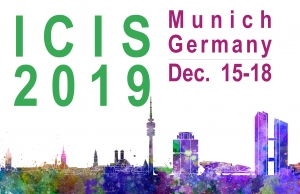Paper ID
1251
Paper Type
short
Description
In this study we create a platform for evaluating social media policies through simulation. We argue that social media policies need to be tested and refined before they can be successfully applied. We propose agent-based modelling (ABM) as a method for representing both malicious and legitimate social media agents, along with their key behaviors. Our two main research questions are as follows. 1. How do we build an agent-based model of a social media platform to address social media regulation? 2. How can an agent-based simulation approach be used to assess the effectiveness of social media policies? A preliminary agent-based model has been implemented (in Python), using the five human user types (‘amplifier’, ‘broadcaster’, ‘commentator’, ‘influential user’ and ‘viewer’) and two bot types (‘simple’ and ‘sophisticated’). During the simulation, a social media network of 100 agents is created and the agents' behaviors are captured in this paper.
Recommended Citation
Onuchowska, Agnieszka and Berndt, Donald J., "Using Agent-Based Modelling to Address Malicious Behavior on Social Media" (2019). ICIS 2019 Proceedings. 24.
https://aisel.aisnet.org/icis2019/cyber_security_privacy_ethics_IS/cyber_security_privacy/24
Using Agent-Based Modelling to Address Malicious Behavior on Social Media
In this study we create a platform for evaluating social media policies through simulation. We argue that social media policies need to be tested and refined before they can be successfully applied. We propose agent-based modelling (ABM) as a method for representing both malicious and legitimate social media agents, along with their key behaviors. Our two main research questions are as follows. 1. How do we build an agent-based model of a social media platform to address social media regulation? 2. How can an agent-based simulation approach be used to assess the effectiveness of social media policies? A preliminary agent-based model has been implemented (in Python), using the five human user types (‘amplifier’, ‘broadcaster’, ‘commentator’, ‘influential user’ and ‘viewer’) and two bot types (‘simple’ and ‘sophisticated’). During the simulation, a social media network of 100 agents is created and the agents' behaviors are captured in this paper.


